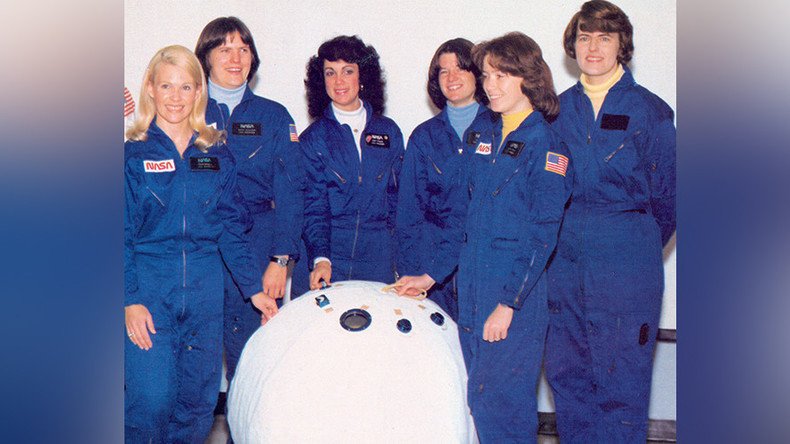NASA expected 1970s astronauts to crawl inside ‘beach ball’ escape pod (PHOTOS)

NASA’s design back catalogue is full of incredible innovations, from the International Space Station to the much-awaited Orion spacecraft.
But the US space agency is not above failure, and one real turkey was the Personal Rescue Enclosure (PRE) – a crude 1970s beach ball-like escape pod made for astronauts on the brink of disaster.
READ MORE: Astronaut makes history as ISS life-support systems restored in emergency op (VIDEOS)
Developed by NASA between 1977-79, the PRE was created as an emergency means to transport astronauts without a spacesuit from one spacecraft to another.
The emergency pod has its place in aerospace history alongside a number of much more effective protective outfits, including the Gemini 4 spacewalk suit from 1965 and the modern day Advanced Crew Escape Suit, otherwise known as the ‘pumpkin’.
Each PRE carried an hour of oxygen and a CO2 scrubber. pic.twitter.com/YsyEYiFLPc
— Aerodork (@AeroDork) May 21, 2017
According to a 2013 presentation by Kenneth Thomas, a NASA spacesuit expert, the PRE was never put into use.
The bizarre creation’s failure to launch may have had something to do with the unit’s incredibly cramped conditions. For an astronaut to have any chance of survival during an in-flight crisis, they would have had to squeeze into the PRE’s 34-inch (90cm) diameter space.
Crucially, one of its design flaws was that anyone hoping to escape in the PRE actually needed to be carried by a second person.
The suited astronaut would (in NASA's words) "provide mobility" for their crewmate in the PRE. pic.twitter.com/mKWX7DwJcU
— Aerodork (@AeroDork) May 21, 2017
Fitted with a portable oxygen system, five of the bubble-like pods were to be carried as rescue kit on NASA orbiters.
Speaking last year, British astronaut Tim Peake revealed that should disaster strike the ISS today, the crew would escape on a Russian Soyuz capsule. However, he added that if a fire broke out on the supply capsule itself, the crew has a terrifying method of putting it out.
“The Soyuz does not have any fire extinguishers. The way to fight a fire in the Soyuz is to close your helmet and depressurise the whole spacecraft. No oxygen equals no fire.”
NASA is working on its next generation spacesuit to replace the 40-year-old Extravehicular Mobility Units (EMU) currently used for spacewalks from the International Space Station.
An audit by the space agency in April revealed that so far $200 million has been plowed into three different designs, including a suit for future missions to Mars. While the report outlined efforts to improve protective space wear, it also raised concerns about the continued reliance on technology that was first used in 1981.
“Despite spending nearly $200 million on NASA’s next-generation spacesuit technologies, the Agency remains years away from having a flight-ready spacesuit capable of replacing the EMU or suitable for use on future exploration missions,” the audit stated.













